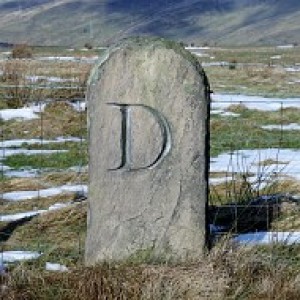Bothy And Lighthouse View, North Rona
Rona (Scottish Gaelic: Rònaigh, pronounced [rˠɔːnaj]) is a remote Scottish island in the North Atlantic. Rona is often referred to as North Rona in order to distinguish it from South Rona (another small island, in the Inner Hebrides). It has an area of 109 hectares (270 acres) and a maximum height of 108 metres (354 ft)[1][4][5]
The island lies 71 kilometres (44 mi) north north east of Butt of Lewis and 18 kilometres (11 mi) east of Sula Sgeir. More isolated than St Kilda, it is the remotest island in the British Isles to have ever been inhabited on a long-term basis. It is also the closest neighbour to the Faroe Islands. Due to the island's remote location and small area, it is omitted from many maps of the United Kingdom.
Rona is said to have been the residence of Saint Ronan in the eighth century. A tiny early Christian oratory which may be as early as this date, built of unmortared stone, survives virtually complete on the island - the best preserved structure of this type in Scotland. A number of simple cross-slabs of early medieval date are preserved within the structure, probably the grave-markers of Dark Age monks or hermits from Scotland or Ireland. The island continued to be inhabited until the entire population of thirty died shortly after 1685 after an infestation by rats, probably the Black Rat Rattus rattus, which reached the island after a shipwreck. The rats raided the food stocks of barley meal and it is possible the inhabitants starved to death, although plague may have been a contributory factor. This occurred in a year in which it is reported that no further ships reached the isolated island to supply or trade. The rats themselves eventually starved to death, the huge swells the island experiences preventing their hunting along the rocky shores.

Comments
Sign in or get an account to comment.


